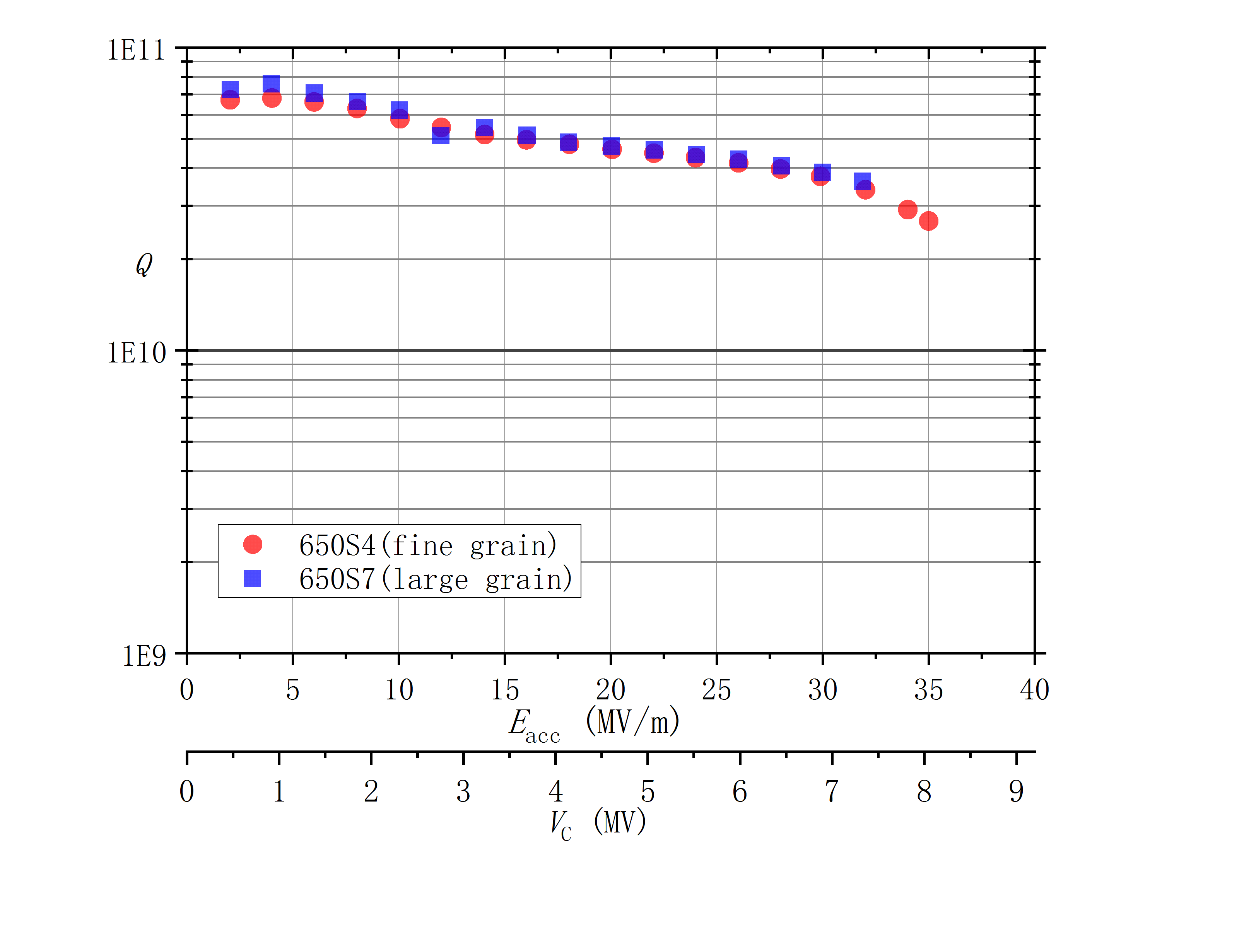Highlights/News
650 MHz SRF Cavities with Ultrahigh Accelerating Gradient
2023-01-19
Particle accelerators are essential tools for advancing our understanding of the fundamental building blocks of the universe. These devices use radio-frequency (RF) electric field to accelerate charged particles, such as electrons or protons, to extremely high energy, allowing scientists to study the interactions of these particles in ways that were previously unimaginable. One of the key components of particle accelerators is the superconducting radio-frequency (SRF) cavity, which generates the RF electric field to accelerate the particles.
Promising Findings for SRF Cavities in High-Energy Colliders
Recently, a study was conducted by the Institute of High Energy Physics, Chinese Academy of Sciences to investigate the application of a combination of buffered chemical polishing (BCP) and electropolishing (EP) on 650 MHz SRF cavities for the Circular Electron Positron Collider (CEPC). The CEPC is a high-energy collider of the Higgs factory, which relies on hundreds of SRF cavities to operate.
Published in the journal Nuclear Science & Techniques, the results of the study were highly promising, as the combination of BCP and EP was able to achieve ultrahigh accelerating gradient (Eacc) with values above 40 MV/m. These values are critical for the performance of particle accelerators, as they determine the scale and cost of these devices.
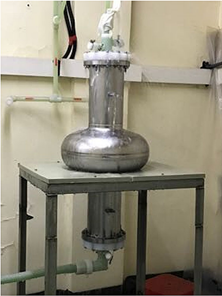
Setup of BCP process for 650 MHz single-cell cavity (Image by IHEP)
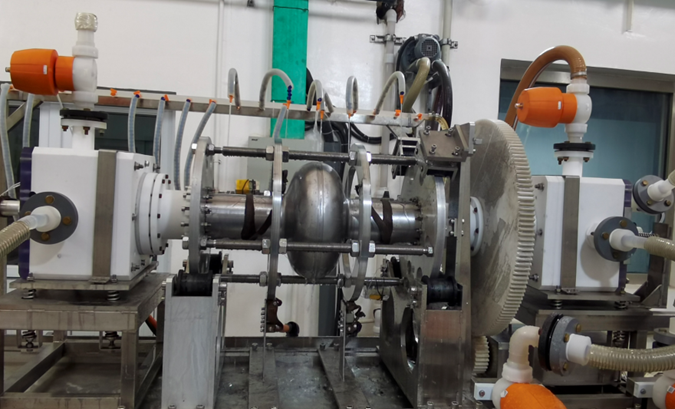
Setup of EP process for 650 MHz single-cell cavity (Image by IHEP)
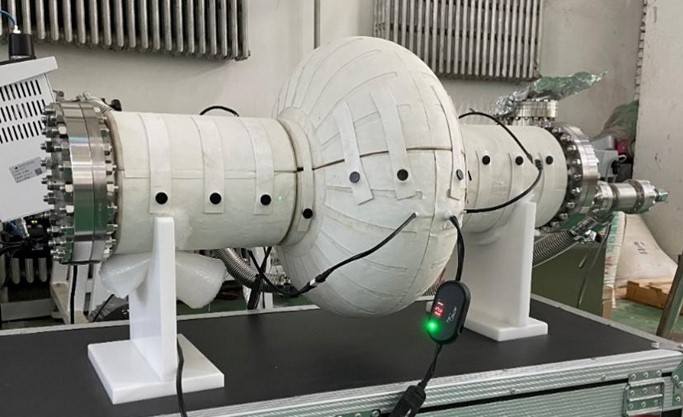
Low-temperature baking of 650 MHz single-cell cavity (Image by IHEP)
After undergoing medium-temperature furnace baking, the SRF cavities also achieved an ultrahigh intrinsic quality factor (Q0) of 8 × 1010 at 22 MV/m and an extremely low BCS resistance (RBCS) of ~1.0 nΩ at 2.0 K. BCS resistance of superconductor is caused by thermally excited quasiparticles, and a low value is desirable for the performance of SRF cavities.
BCP and EP: A Winning Combination for SRF and Accelerators
The application of BCP and EP as a combination treatment for SRF cavities is a significant advancement in the fields of SRF and accelerators. Previously, SRF cavities were commonly treated by either BCP or EP, but each method had its own limitations. BCP is easy and cheap, but it often results in lower Eacc. EP, on the other hand, is able to achieve higher Eacc and Q0, but it is a more complex and costly process. The combination of BCP and EP represents a simple and cost-effective method for significantly improving the performance of SRF cavities.

Setup of mid-T furnace baking for 650 MHz single-cell cavity (Image by IHEP)
The results of this study have paved the way for future research in the fields of SRF and accelerators. It is expected that the application of this combination treatment will lead to even more powerful and efficient particle accelerators, enabling scientists to make new discoveries about the fundamental nature of the universe. This research aligns with United Nations Sustainable Development Goal 9: Industry, Innovation & Infrastructure, as it promotes the development of innovative technologies to support industrial growth.
The Next Step in Accelerators
Particle accelerators have a wide range of applications, from medical imaging and cancer treatment to materials science and industrial processing. They are also important tools for fundamental physics research, allowing scientists to study the properties of subatomic particles and the fundamental forces of nature. The performance of SRF cavities is a critical factor in determining the capabilities of particle accelerators, as they affect the scale and cost of these devices.
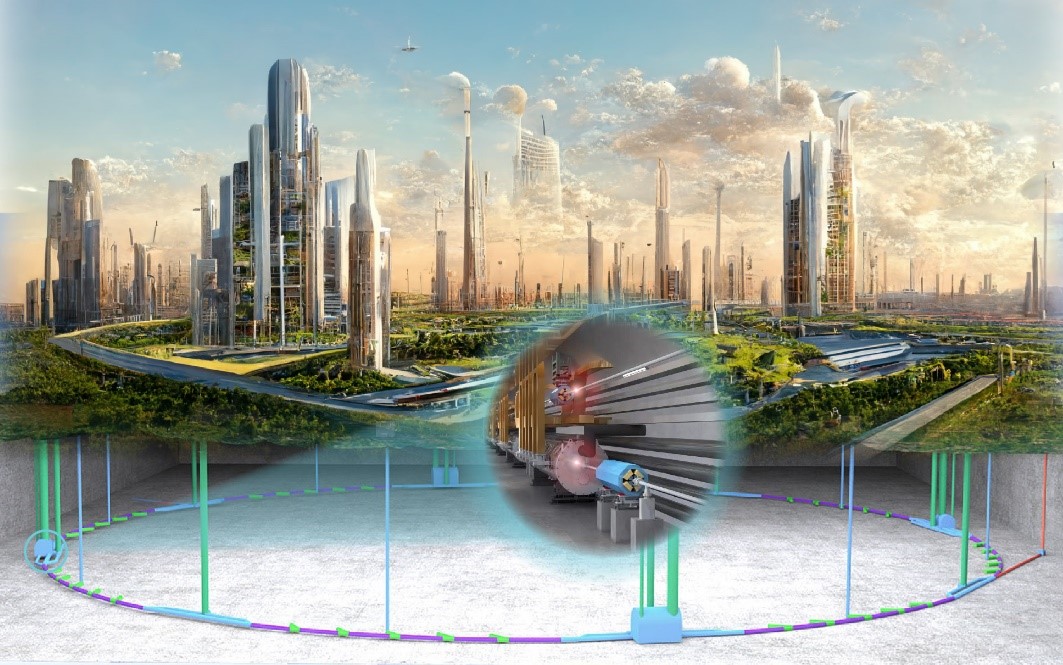
Conceptual Art of Circular Electron Positron Collider (CEPC) to be built in China (Image by IHEP)
Contact Information
Mr. GUO Lijun
ljguo@ihep.ac.cn
